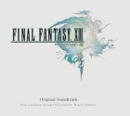
|
|
Mika Nakashima
 | Date of Birth: | February 19, 1983 (Kagoshima-Ken, Kyushu) |
| Active From: | 2001 | |
| Related Projects: | Drag-on Dragoon 2 | |
| Official Web Site: | Mika Nakashima Official Web Site |
Biography
Note: This biography was written exclusively for Square Enix Music Online by Chris. The act of copying it without advance written permission is regarded as a copyright infringement. It was last updated on April 22, 2006.
Born on February 19, 1983 in Kagoshima-Ken, Kyushu, Mika Nakashima is a diva, actress, and model who has developed into one of Asia's most successful artists over the last five years. Having dreamt of becoming a professional singer from a young age, Nakashima did not attend high school in order to maximise focus on her voice training. At just 18, Nakashima rose to fame after being selected from 3,000 girls to be the heroine of Autumn 2001's Fuji TV drama Kizu darake no love song. She soon made her musical debut with November's single Stars, released under Sony Music Associated Records. It immediately established Nakashima as an artist, selling over half a million copies. Nakashima attained further commercial success with the limited edition Crescent Moon, whose 100,000 copies sold out on the day of its release. After the release of her first video and three more highly successful single releases, Nakashima released her first full-length album, True, in August 2002, declared Album of the Year at the Gold Disc Awards after selling 1.5 million copies. These releases established Nakashima's mature and unique jazz-pop style. Her distinctive voice is smoky and low-pitched enough to represent the deeper emotion of her songs and convey the meaning of their lyrics passionately, though is controlled perfectly and carefully restrained so that it attains a seamless quality without any loss of sincerity.
After her first album, Nakashima strengthened as an artist in terms of versatility, public recognition, and record sales. Having released December 2002's documentary Kiseki: Document of a Star to reflect upon the person behind the music, she attained public recognition with several eminent awards. She won Best New Artist at All Japan Request Awards 2002 and several similar accolades at the Golden Arrow Awards and The 44th Japan Record Awards. Having commemorated the first anniversary of her debut with the best-selling Premium EP Resistance, Nakashima grew in popularity, culminating in the released of her second album, simply titled Love. A dramatic and feminist concept album dedicated to the theme of love, it showcased Nakashima's diversity with its mixture of ballads, reggae, funk, RnB, light techno, and modal jazz, selling over 1.5 million copies to date. Her third album, March 2005's Music, was critically acclaimed and regarded as her most eclectic and experimental release, though only sold about a third as many copies as True. Her first 'best of' collection, Best, was released eight months later. With these releases, she also became a big hit outside of Japan, notably in Taiwan, China, and, most significantly, Korea, where she was the first Japanese artist ever to sell over 30,000 units and has been covered by other artists.
Nakashima has contributed to numerous projects outside the field of pop music. She made an acting comeback for the eagerly anticipated manga-based live-action movie Nana and its sequel. Here, she starred as Oosaki Nana alongside Aoi Miyazaki, receiving acclaim across Japan for her role. The production resulted in the Number One image single Glamorous Sky, her first rock effort composed by Hyde of L'Arc~en~Ciel. Also a contributor to anime, she has sung Gundam Seed's "Find the Way" and Hi no tori's ending theme. In June 2005, Nakashima released the single "Hitori", the ballad of Square Enix's Drakengard 2 (aka Drag-on Dragoon 2), interpreted in three different renditions and also included in the game's Original Soundtrack and as the last track in Music. While this didn't give her intentional recognition on the level of the artists involved in the Final Fantasy and Kingdom Hearts series, it is regarded as one of the most mature yet accessible singles to ever feature in a video game. Her 2006 singles have been Cry No More, another collaboration with Hyde, as well as the Hurricane Katrina commemoration All Hands Together and her latest release, the reggae-inspired summer song My Sugar Cat. With three studio albums, 19 singles, and several acting works to her name Nakashima's popularity grows day-by-day and, having achieved so much in just five years, many feel she still has yet to fully bloom. Eclectic, emotive, and human, she is a unique voice in the J-music industry.
List of Songs for Related Projects
| Song Title | Game Featured In |
| Hitori | Drakengard 2 |
List of Covered Albums
| Album Title | Catalog No. |
| Drag-on Dragoon 2 Original Soundtrack | AICL-1628 |
| Drag-on Dragoon 2: Hitori - Mika Nakashima | AICL-1616 |

